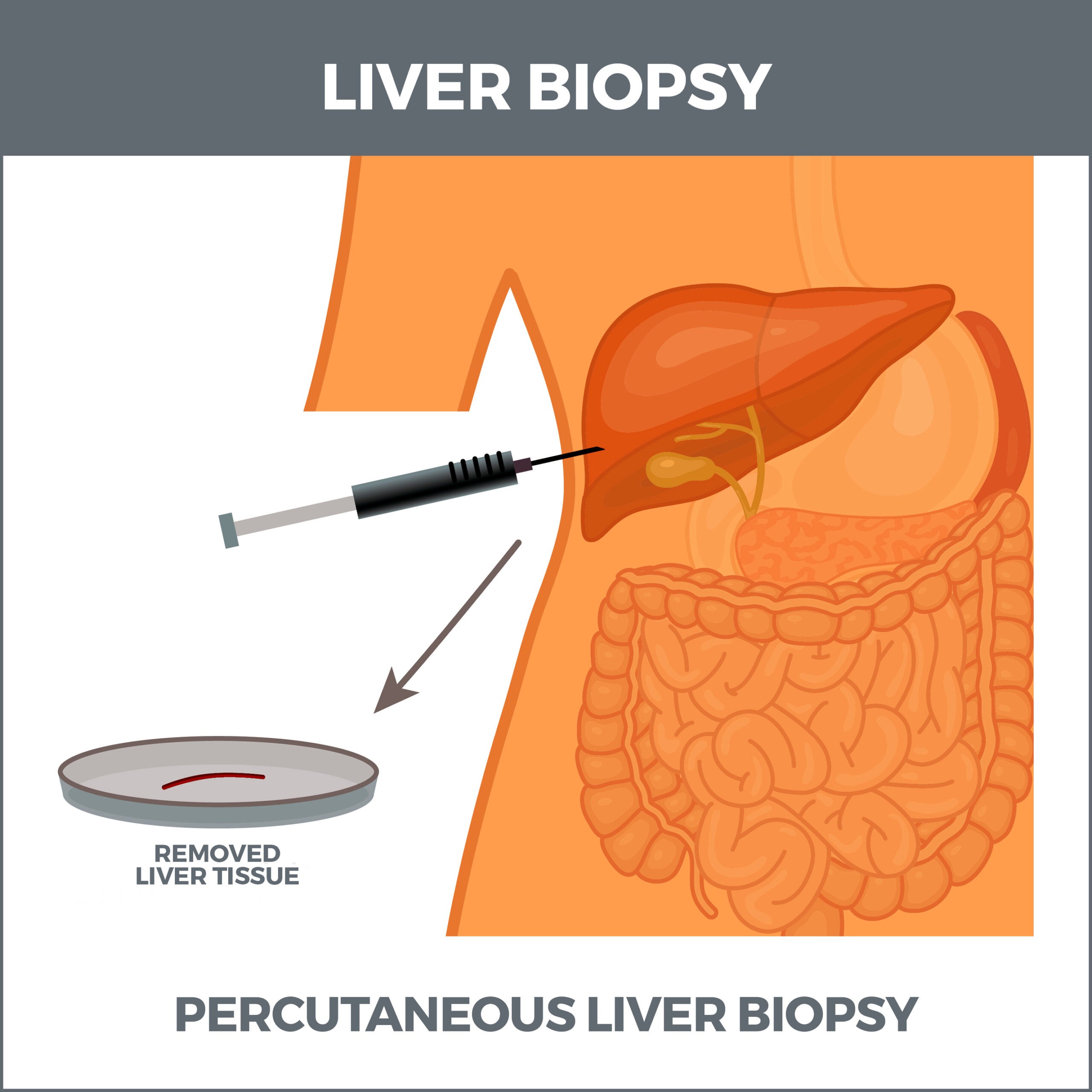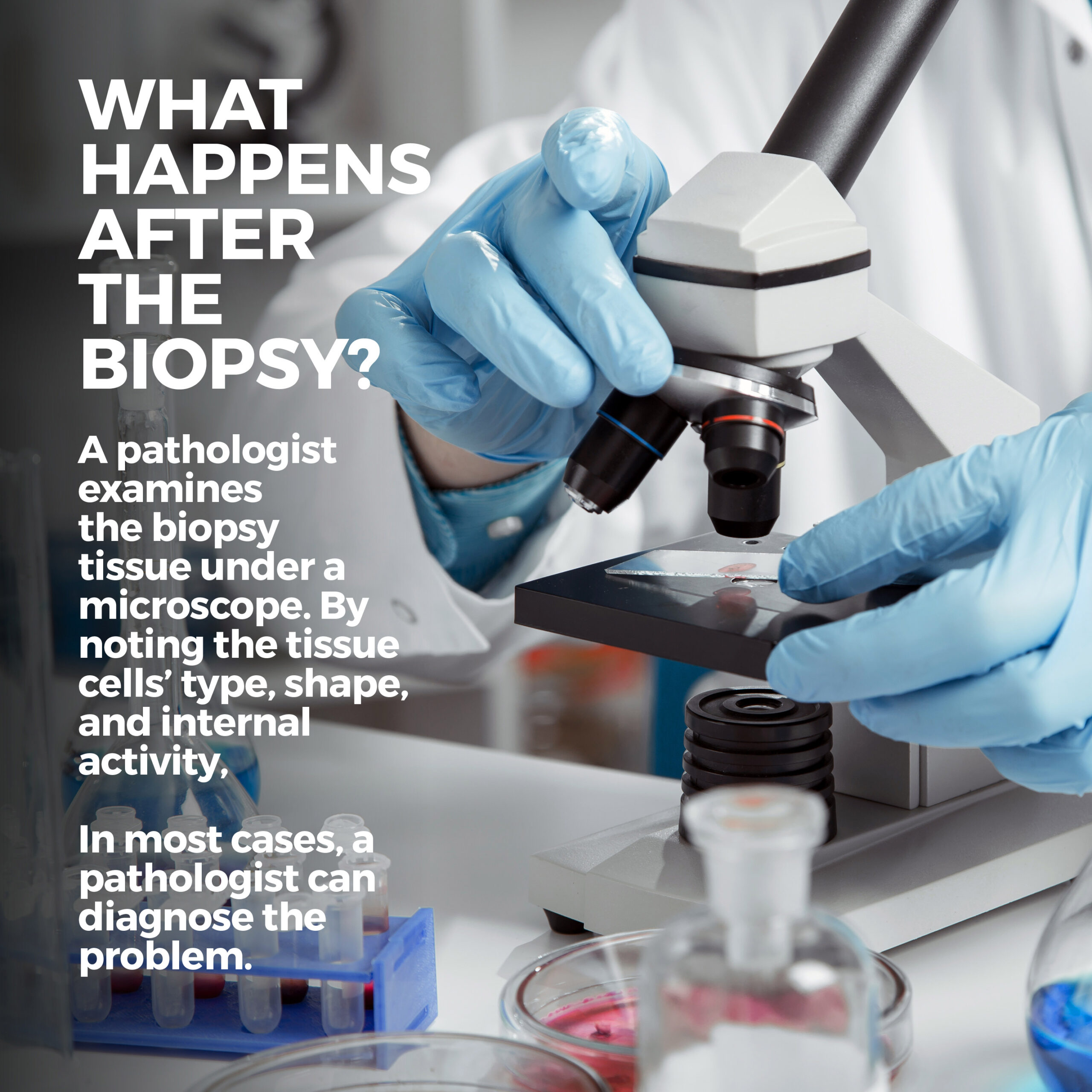Biopsies
Information is power.
That’s certainly true in healthcare.
One way to effectively gather information is from a biopsy.
Biopsy Overview
The term biopsy is often used to refer to both the act of taking the sample and the tissue sample itself.
A biopsy is a procedure to remove a piece of tissue or a sample of cells from your body so that it can be tested in a laboratory. A tissue sample can be taken from almost anywhere on or in your body, including the skin, organs, and other structures. A biopsy can determine whether you have cancer or another condition.
Why a Biopsy?
Imaging tests, such as CT scans or MRIs, help detect masses or irregular tissue, but they alone can’t tell the difference between cancerous cells and cells that aren’t cancerous. For most cancers, the only way to make a diagnosis is to perform a biopsy to collect cells for closer examination.
When a Biopsy May be Needed
You may undergo a biopsy if you’re experiencing certain signs and symptoms or if your doctor has identified an area of concern.
A biopsy can be used to investigate abnormalities, which can be:
- Functional – such as kidney or liver problems.
- Structural – such as swelling in a particular organ.
When the tissue sample is examined under the microscope, abnormal cells may be identified, which can help to diagnose a specific condition.
If a condition has already been diagnosed, a biopsy can also be used to assess its severity (such as the degree of inflammation) and grade (such as the aggressiveness of a cancer).

This information can be very useful when deciding on the most appropriate treatment and assessing how well a person responds to a particular type of treatment.
It can also help determine a person’s overall prognosis and outlook.
Examples of conditions where a biopsy may be helpful include:
- Cancer.
- Inflammation, such as in hepatitis or kidney (nephritis).
- Infection, such as in lymph nodes – for example, tuberculosis.
- Various skin conditions.
It’s not usually possible to tell whether a lump or growth on your skin or inside your body is cancerous (malignant) or non-cancerous (benign) by clinical examination alone, which is why a biopsy is often required.
Types of Biopsies
There are many different kinds of biopsies. Nearly all involve using a sharp tool to remove a small amount of tissue. If the biopsy will be on the skin or other sensitive area, numbing medicine is applied first.
Biopsy types:
- Needle biopsy: Most biopsies are needle biopsies, meaning a needle is used to access the suspicious tissue.
- CT-guided biopsy: A person rests in a CT scanner. The scanner’s images help doctors determine the exact position of the needle in the targeted tissue.
- Ultrasound-guided biopsy: An ultrasound scanner helps direct the needle into the lesion.
- Bone biopsy: A bone biopsy is used to look for cancer of the bones. This may be performed via the CT scan technique or by an orthopedic surgeon.
- Bone marrow biopsy: A large needle is used to enter the pelvis bone to collect bone marrow. This detects blood diseases such as leukemia or lymphoma.
- Liver biopsy: A needle is injected into the liver through the skin on the belly, capturing liver tissue.
- Kidney biopsy: Like a liver biopsy, a needle is injected through the skin on the back into the kidney.
- Aspiration biopsy: A needle withdraws material out of a mass. This procedure is also called fine-needle aspiration.
- Prostate biopsy: Multiple needle biopsies are taken at one time from the prostate gland. To reach the prostate, a probe is inserted into the rectum.
- Skin biopsy: A punch biopsy is the primary biopsy method. It uses a circular blade to get a small cylindrical sample of skin tissue.
- Surgical biopsy: Either open or laparoscopic surgery may be necessary to get a biopsy of hard-to-reach tissue. Either a piece of tissue or a whole lump of tissue may be removed.

The Procedure
Typically, endoscopies last anywhere from 5 to 30 minutes. In most cases, biopsies are outpatient procedures, so you won’t need to stay in a hospital overnight. But occasionally, some types of biopsies, such as those where a tissue sample needs to be taken from an internal organ, may need a general anesthetic. In this instance, you’ll need to stay long enough to ensure recovery from the anesthesia.
After having a biopsy, you won’t usually feel any pain. But if you have had a tissue sample taken from your bone marrow or a major organ, such as your liver, you may feel a dull ache or some slight discomfort. Your doctor may recommend painkillers to help relieve this.
If an incision is needed to remove a tissue sample – for example, during an excision biopsy – stitches may be required to close the wound, or a dressing may need to be applied.
If tissue is removed from an internal organ, such as your liver or kidneys, you’ll need to stay in the surgery center or hospital for a few hours after the procedure. This is so you can rest, and the staff can make sure there’s no internal bleeding.
It’s rare for serious bleeding to occur after having a biopsy, but if it does, you may need to have an operation or a blood transfusion. In rare cases, another procedure or operation may be required.
What Happens After the Biopsy?
After the tissue is collected and preserved, it’s delivered to a pathologist. Pathologists are doctors who specialize in diagnosing conditions based on tissue samples and other tests. (Sometimes, the doctor collecting the sample can diagnose the condition.)
A pathologist examines the biopsy tissue under a microscope. By noting the tissue cells’ type, shape, and internal activity, in most cases, a pathologist can diagnose the problem.

Getting Your Results
The time it takes to get results from a biopsy can vary. How quickly you get your biopsy results can depend on your case’s urgency, the lab, and the facility’s policies. Results are often available within a few days. But this is difficult to predict because further tests may be needed after the first examination of the sample. It’s sometimes necessary to send the microscope slides away to get another specialist opinion.
If a biopsy is carried out during surgery, a different processing method is sometimes used, known as a frozen section. This enables the surgeon to get a preliminary result, which can be used to help guide treatment while it’s in progress.
Your doctor, physician’s assistant, or nurse practitioner will give you your results and explain their meaning.
A biopsy can sometimes be inconclusive, which means it hasn’t produced a definitive result. In this case, the biopsy may need to be repeated, or other tests may be required to confirm your diagnosis.
Contact Us
The team of professionals at GastroMD looks forward to providing you with the information that will empower better-informed decisions and treatments.
GastroMD is one of the leading gastroenterology practices in the Tampa Bay area. We perform a host of diagnostic procedures using state-of-the-art equipment in a friendly, comfortable, and inviting atmosphere where patient care is always a top priority!



